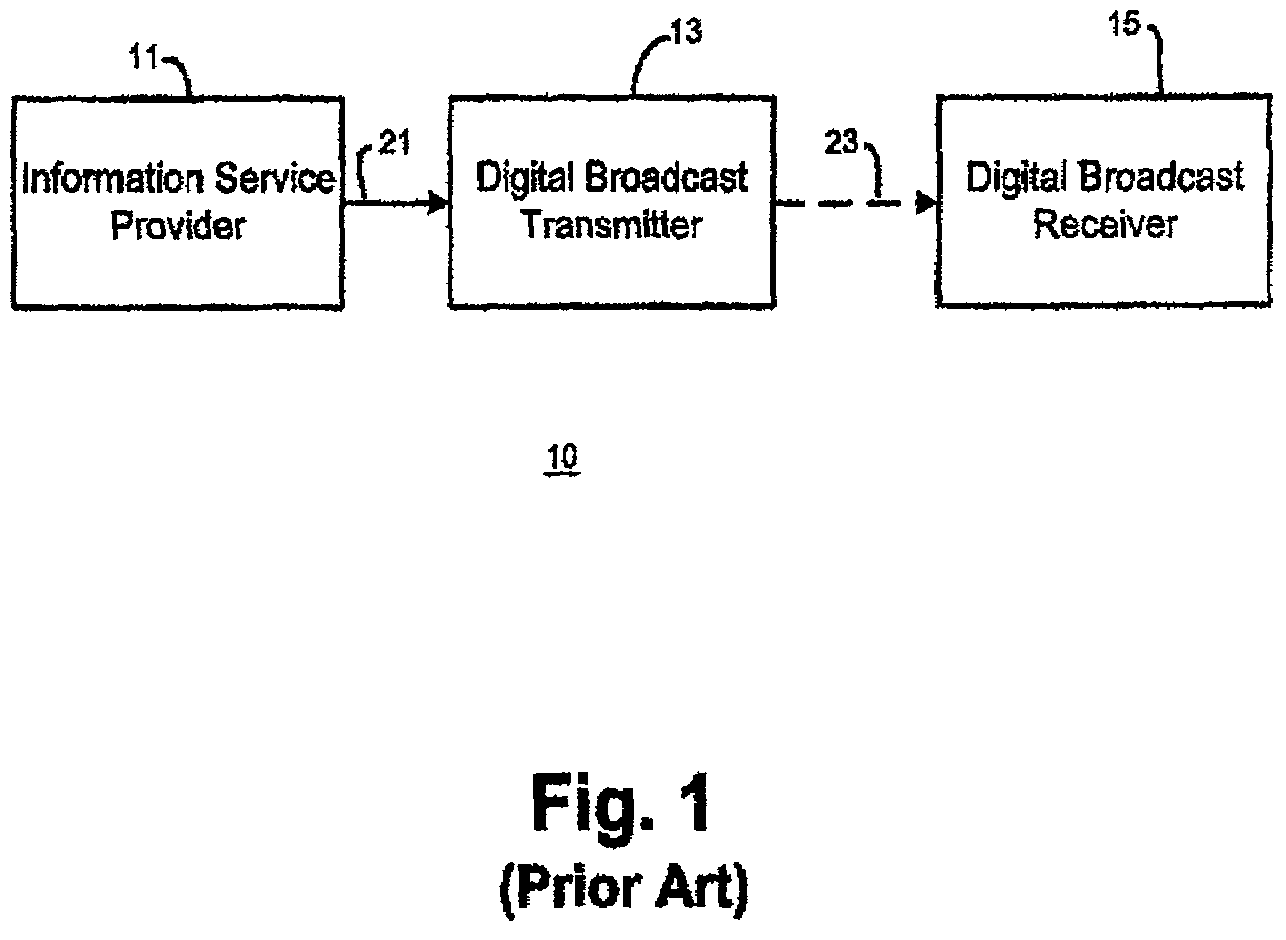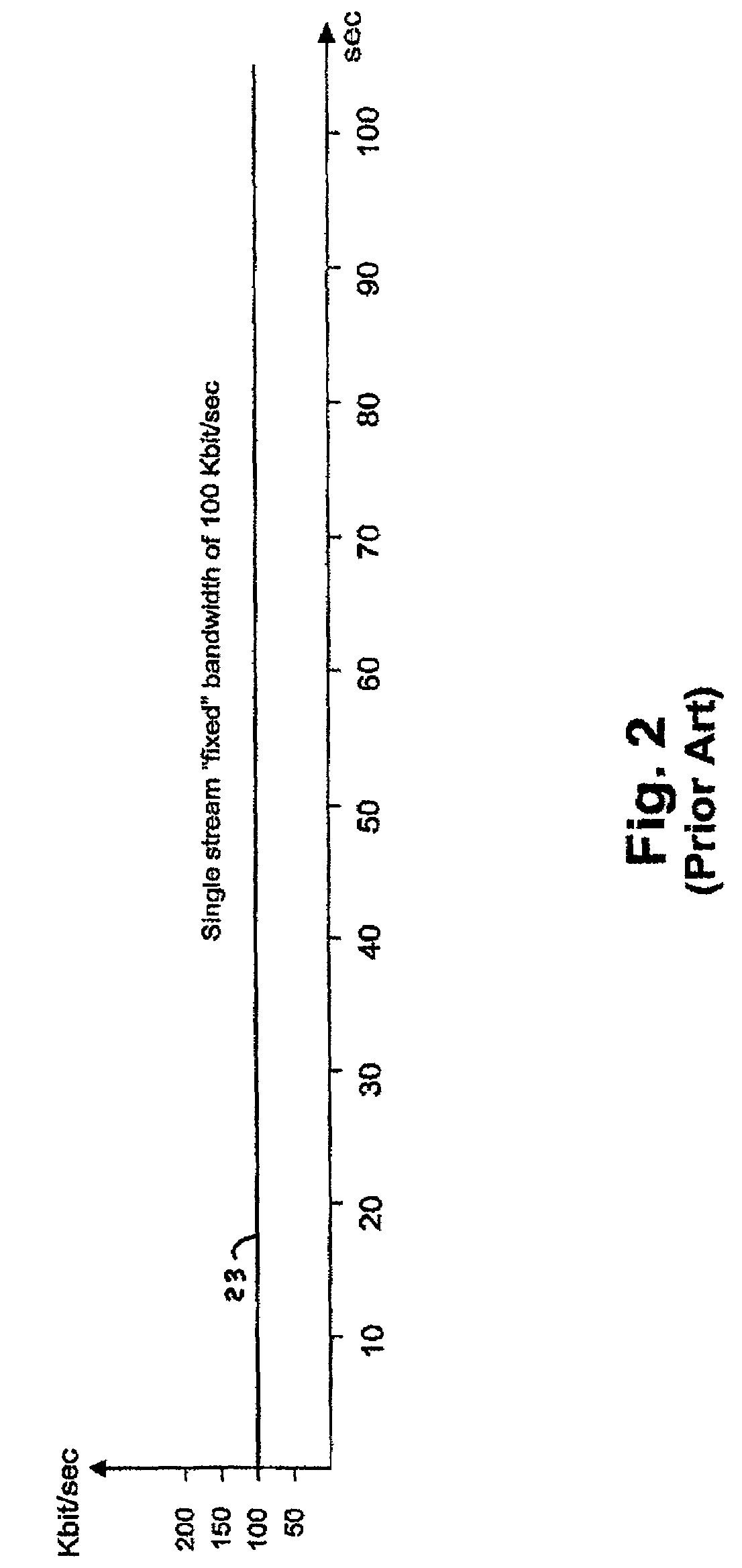Time-slice signaling for broadband digital broadcasting
a digital broadcasting and time-slice technology, applied in the field of transmission, can solve the problems of relatively high power consumption levels, especially in the front end of a digital broadcast receiver, and achieve the effects of reducing power consumption, reducing power consumption by the receiver, and reducing the power consumption sta
- Summary
- Abstract
- Description
- Claims
- Application Information
AI Technical Summary
Benefits of technology
Problems solved by technology
Method used
Image
Examples
Embodiment Construction
[0037]FIG. 1 is a simplified diagram of a conventional streaming digital broadcasting system 10 in which an information signal 21 originating at an information service provider 11 is transmitted to a client accessing a digital broadcast receiver 15. The information signal 21 is typically sent from the service provider 11 to a transmitter 13 over a link, which can be an Internet link. The transmitter 13 broadcasts the information signal to the receiver 15 as a streaming signal 23, typically by means of a broadcast antenna (not shown).
[0038]In a conventional signal transmission application, the transmitter 13 provides a continuous or a slowly varying data stream having a bandwidth of approximately 100 Kbit / sec, such as shown in FIG. 2. The streaming signal 23 thus exhibits the same transmission rate of 100 Kbit / sec. The digital broadcast receiver 15 necessarily operates in a constant powered-on mode in order to receive all the information provided by the streaming signal 23, which may...
PUM
 Login to View More
Login to View More Abstract
Description
Claims
Application Information
 Login to View More
Login to View More - R&D
- Intellectual Property
- Life Sciences
- Materials
- Tech Scout
- Unparalleled Data Quality
- Higher Quality Content
- 60% Fewer Hallucinations
Browse by: Latest US Patents, China's latest patents, Technical Efficacy Thesaurus, Application Domain, Technology Topic, Popular Technical Reports.
© 2025 PatSnap. All rights reserved.Legal|Privacy policy|Modern Slavery Act Transparency Statement|Sitemap|About US| Contact US: help@patsnap.com



